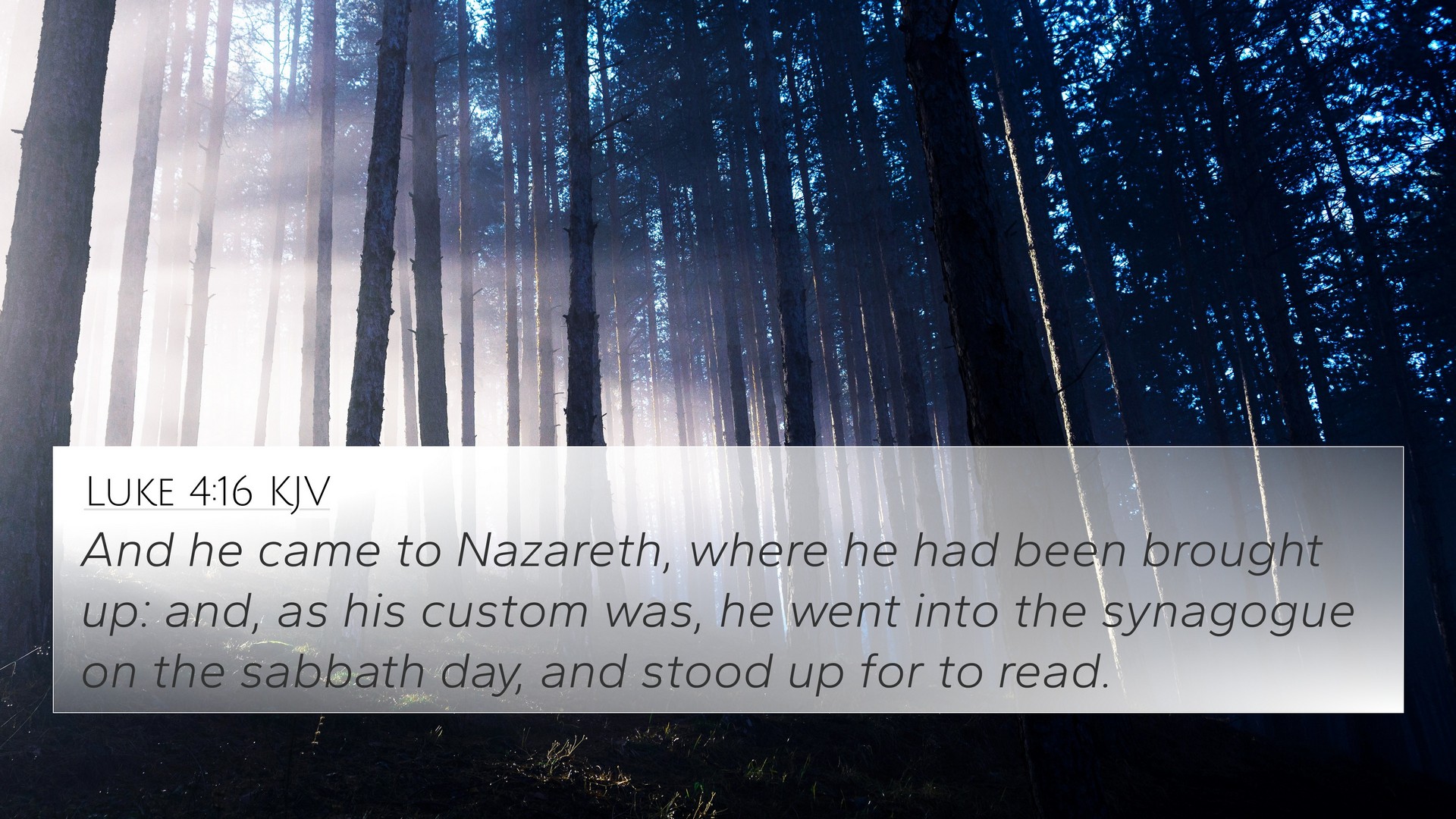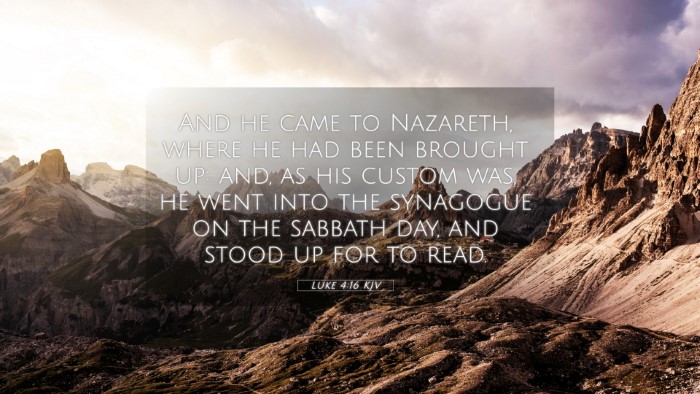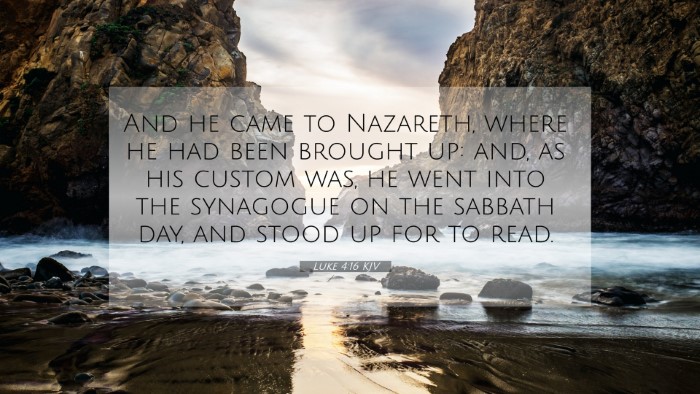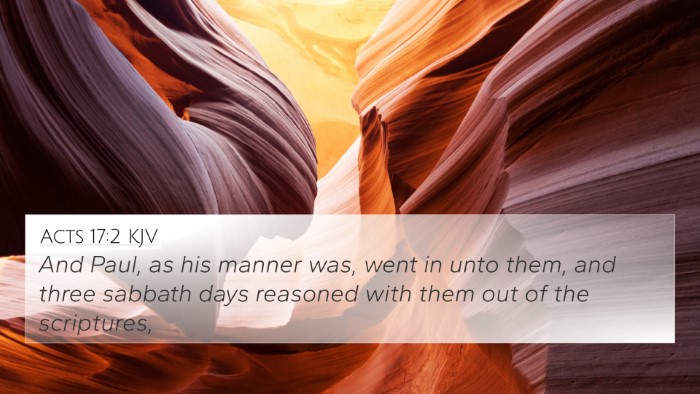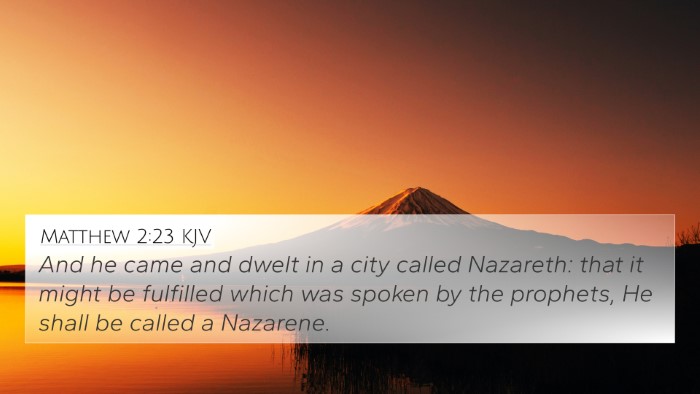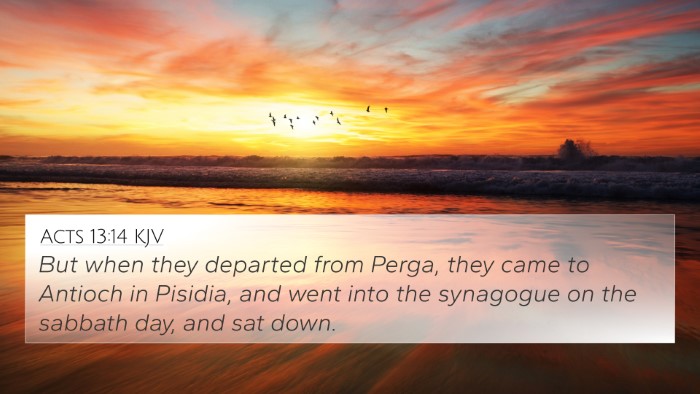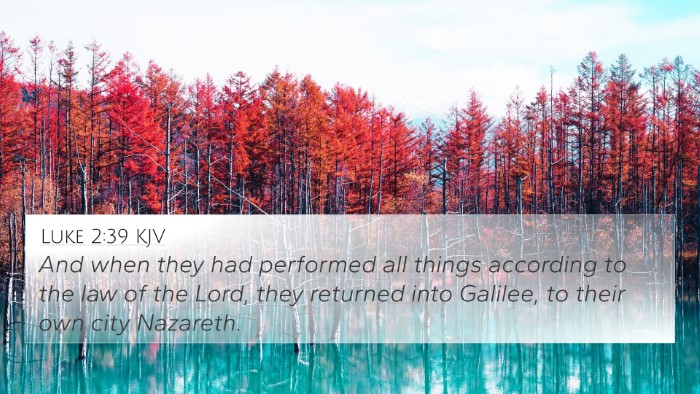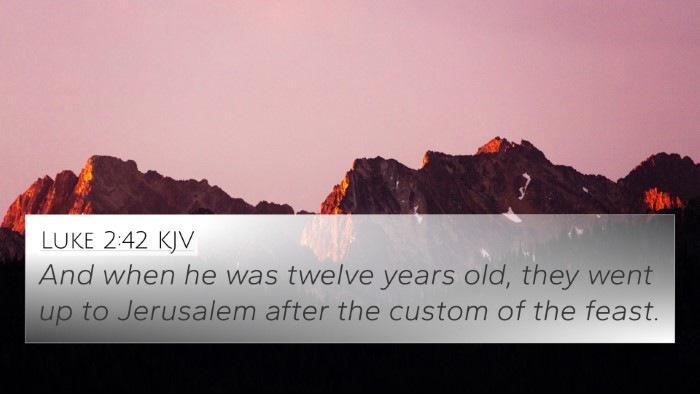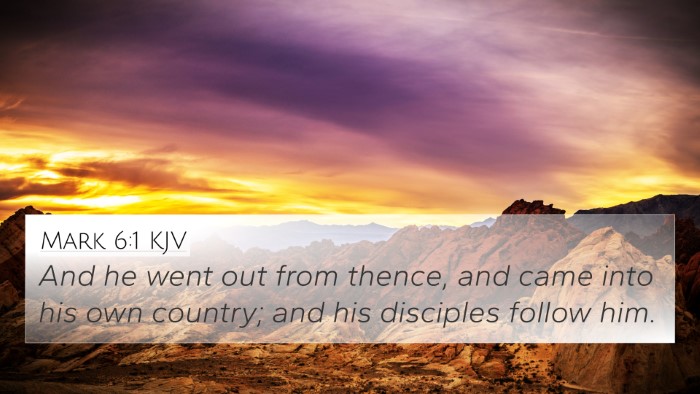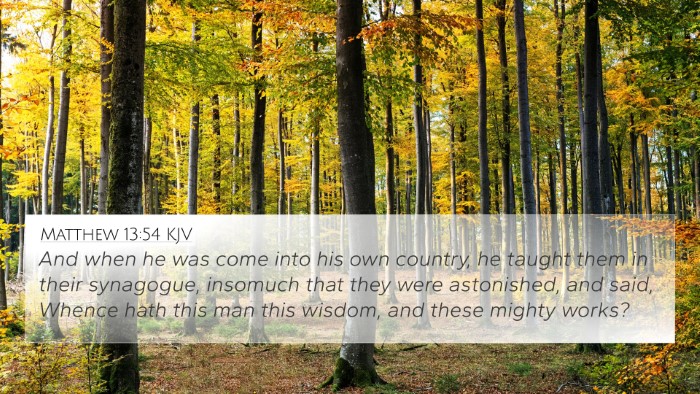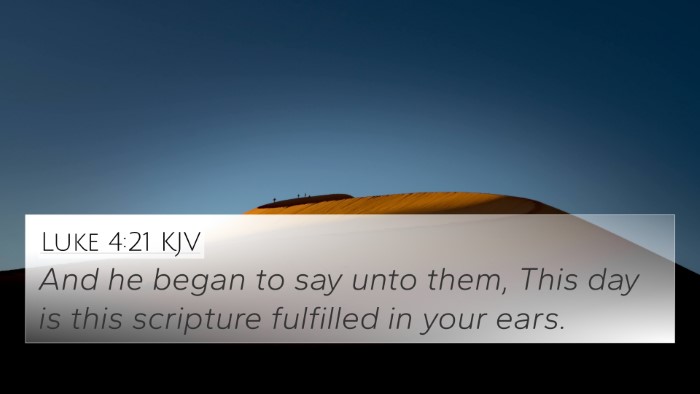Understanding Luke 4:16
Luke 4:16 states:
“And he came to Nazareth, where he had been brought up: and, as his custom was, he went into the synagogue on the sabbath day, and stood up for to read.”
Summary of Luke 4:16
This verse highlights an important moment in Jesus' life where He returns to the place of His upbringing, Nazareth. It emphasizes His identity as a local boy among the people and showcases His customs, specifically the practice of attending synagogue on the Sabbath. This mirrors the Jewish tradition and sets the stage for His public ministry.
Commentary Insights
The following insights are derived from public domain commentaries, giving a deeper understanding of this scripture:
-
Matthew Henry:
Henry points out that Jesus' habitual attendance at the synagogue demonstrates His commitment to Jewish traditions and the Scriptures. It also illustrates His humble beginnings and the significance of community and worship in His life.
-
Albert Barnes:
Barnes emphasizes the importance of Jesus making a public declaration of His mission within the community He grew up. This was not only a setting for teaching but also a return to His roots. He notes that standing to read was a customary practice and part of Jesus’ preparation for the message He would deliver.
-
Adam Clarke:
Clarke remarks on the prophetic implications of Jesus’ return to His hometown, hinting at the mixed reception He would later face. He underlines the significance of the synagogue as a place of instruction and reflection and how it served as a foundational setting for Christ's ministry.
Bible Verse Cross-References
Luke 4:16 can be connected with several other scriptures in a meaningful way. Below are cross-references that deepen the understanding of this verse:
- Matthew 12:9: Jesus healing on the Sabbath in the synagogue shows His authority over traditions.
- Mark 1:21: A similar account of Jesus teaching in the synagogue highlights His teaching authority.
- Isaiah 61:1: The prophecy Jesus reads reflects His mission and purpose, connecting the Old Testament to His ministry.
- Luke 2:49: At a young age, Jesus is found teaching in the temple, establishing His early commitment to scripture.
- Hebrews 10:25: Encouragement to assemble together in worship relates to Jesus’ practice of attending the synagogue.
- Acts 13:14: Paul’s visit to synagogues mirrors Jesus’ customs, emphasizing early Christian practices.
- John 18:20: Jesus speaks openly in synagogues, indicating His transparency in teaching and interactions.
Thematic Bible Verse Connections
Exploring thematic connections, we can see that this verse reflects broader themes in Scripture:
-
Identity: Jesus' life and ministry demonstrate His dual nature as both fully divine and fully human, returning to His humility while affirming His mission.
-
Community: The emphasis on synagogue worship highlights the communal aspect of faith and how Jesus actively participated in the life of His community.
-
Tradition: Jesus' customs of attending the synagogue showcase the preservation of Jewish traditions and their foundational role in His teachings.
Inter-Biblical Dialogue
An analysis of Luke 4:16 invites a dialogue between the Old and New Testaments:
- Old Testament Prophecies: The connection to Isaiah hints at how Christ fulfills the ancient prophecies, forming a bridge between the covenants and the anticipation of a Messiah.
- New Testament Practices: The habits of Jesus amplify early Christian practices and the significance of gathering as believers in faith.
Tools for Bible Cross-Referencing
For those looking to deepen their understanding through cross-referencing, several tools and methods are available:
- Bible Concordance: A tool that allows for tracking specific words or themes across different scriptures.
- Bible Cross-Reference Guide: Handy references that provide related verses to specific passages.
- Cross-Referencing Bible Study: Methods of study where related verse analysis enriches comprehension.
- Comprehensive Bible Cross-Reference Materials: Extensive compilations of scriptural references crucial for deep theological studies.
Conclusion
Luke 4:16 not only presents a moment in Jesus' early life but serves as a gateway for understanding His mission and customs. Through the commentary insights and cross-references provided, we observe a rich tapestry of connections and thematic elements interwoven throughout the scripture. Utilizing cross-referencing tools, readers can delve deeper into the connections between Bible verses and draw profound insights into their faith journey.
